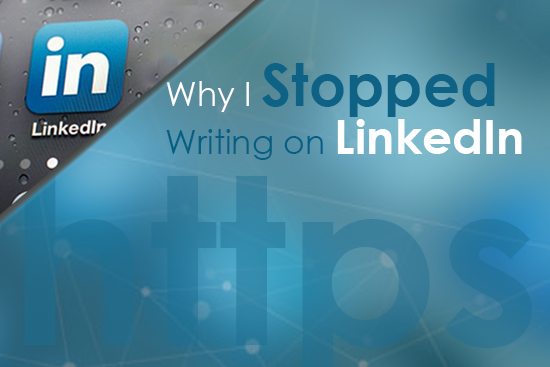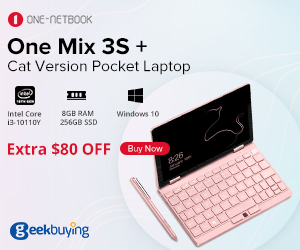Why I Stopped Writing on LinkedIn
https://admateacademy.blogspot.com/2017/11/why-i-stopped-writing-articles-on.html
 |
| © March Oyinki 2017 |
If you are a digital marketer, then you should be able to understand why it is importance having an environment that allows you to embed affiliate codes in your content. I started writing articles and posting them on Linked because at the time I was naïve, and as a new LinkedIn subscriber, all I wanted was just to make a mark by posting as many articles as possible and improve my profile rating on the platform.
Actually, I started writing articles and posting them on Linked sometime in January 2017. After I had written quite a number of these articles, I came to the realization that I was not able to embed my affiliate codes on the articles; and as a digital marketer, it is not enough for me that all I could achieve on my LinkedIn page was merely posting of articles.
Rather than earn commission from my affiliate links and banners, what I could get in return for all that work, was engagement; that is, likes, shares and comments, which was even not forth coming as expected, and that I understand, because I was just a fresh subscriber on LinkedIn. This situation of not earning from my LinkedIn posts started getting me frustrated; and that was when I resorted to creating a blogger account, which allows me to embed affiliate codes, and that is where I currently post all my articles and my income stream has steadily increased.
Google’s blogger provides the opportunity to embed codes on my articles and promote affiliate banners, which enables me generate income through advertisers’ commissions, an opportunity I never got posting on LinkedIn. While I am now able to earn extra income doing what I enjoy most, which is writing about digital marketing using Blogger.
I found LinkedIn to be interested only in making money out of its subscribers, and not interested in helping digital marketers that signed up with them to earn some income from affiliate links and banners. The irony is that, though LinkedIn advertises on Google AdSense, it would not allow digital marketers to embed AdSense codes of their content under the LinkedIn platform.
Affiliate codes are a vital part of revenue generation strategy for digital marketers, and any platform that does not support the promotion of affiliate links and banners are just not ready for the digital marketing industry. LinkedIn may be the best B2B social media channel and highly favoured by digital marketing practitioners, most especially for attracting engagement and leads generation, but it is certainly rated low in affiliate revenue generation, which is the largest source of income for digital marketers.
With the metamorphoses that the digital marketing industry is currently experiencing, and the insurgence of smartphones and wearable devises, 5G internet connectivity, and the increasing use of content types such as video streaming, animated GIF, videography as well as the predominance of mobile marketing, the B2B social media environment is experiencing dramatic transformation.
Digital marketers have now started exploiting new B2B social media options such as Facebook, Instagram, YouTube, Google+, which are now giving LinkedIn a run for their money. LinkedIn, the leading B2B social media channels, would soon find it difficult to maintain its leading position, if the company fails to keep up with the trends and support these new technology.
Though LinkedIn finally introduced video streaming after a lot of pressure was mounted on the company by subscribers such as myself, it now realized that they have to follow the trends in the industry. Likewise, if LinkedIn upgrades the features on desktop GUI so that it introduces features that accommodate the embedding of affiliate codes and allow digital marketers display links and banners; it would enormously increase the number of digital marketers using LinkedIn, and help the company continue to remain relevant in the industry.
For most digital marketers, it is beyond simply attracting engagement; it is actually more about generating leads that become conversion. The bottom line is sales and high return on investment. There is no sentimental attachment to a social media channel used by a digital marketer, especially those channels that does not support their income streams; such channels are quickly dropped and with me, that is exactly what happened to LinkedIn.
The inbound marketing strategy of LinkedIn requires some strengthening if truly, they want to reinforce their strong hold in the B2B social media segment. One of the ways they can do this is by allowing affiliate codes and links to be embedded on the LinkedIn platform. If this is done, it would help attract higher numbers of digital marketers to use the site.
Actually, I started writing articles and posting them on Linked sometime in January 2017. After I had written quite a number of these articles, I came to the realization that I was not able to embed my affiliate codes on the articles; and as a digital marketer, it is not enough for me that all I could achieve on my LinkedIn page was merely posting of articles.
Rather than earn commission from my affiliate links and banners, what I could get in return for all that work, was engagement; that is, likes, shares and comments, which was even not forth coming as expected, and that I understand, because I was just a fresh subscriber on LinkedIn. This situation of not earning from my LinkedIn posts started getting me frustrated; and that was when I resorted to creating a blogger account, which allows me to embed affiliate codes, and that is where I currently post all my articles and my income stream has steadily increased.
Google’s blogger provides the opportunity to embed codes on my articles and promote affiliate banners, which enables me generate income through advertisers’ commissions, an opportunity I never got posting on LinkedIn. While I am now able to earn extra income doing what I enjoy most, which is writing about digital marketing using Blogger.
I found LinkedIn to be interested only in making money out of its subscribers, and not interested in helping digital marketers that signed up with them to earn some income from affiliate links and banners. The irony is that, though LinkedIn advertises on Google AdSense, it would not allow digital marketers to embed AdSense codes of their content under the LinkedIn platform.
Affiliate codes are a vital part of revenue generation strategy for digital marketers, and any platform that does not support the promotion of affiliate links and banners are just not ready for the digital marketing industry. LinkedIn may be the best B2B social media channel and highly favoured by digital marketing practitioners, most especially for attracting engagement and leads generation, but it is certainly rated low in affiliate revenue generation, which is the largest source of income for digital marketers.
With the metamorphoses that the digital marketing industry is currently experiencing, and the insurgence of smartphones and wearable devises, 5G internet connectivity, and the increasing use of content types such as video streaming, animated GIF, videography as well as the predominance of mobile marketing, the B2B social media environment is experiencing dramatic transformation.
Digital marketers have now started exploiting new B2B social media options such as Facebook, Instagram, YouTube, Google+, which are now giving LinkedIn a run for their money. LinkedIn, the leading B2B social media channels, would soon find it difficult to maintain its leading position, if the company fails to keep up with the trends and support these new technology.
Though LinkedIn finally introduced video streaming after a lot of pressure was mounted on the company by subscribers such as myself, it now realized that they have to follow the trends in the industry. Likewise, if LinkedIn upgrades the features on desktop GUI so that it introduces features that accommodate the embedding of affiliate codes and allow digital marketers display links and banners; it would enormously increase the number of digital marketers using LinkedIn, and help the company continue to remain relevant in the industry.
For most digital marketers, it is beyond simply attracting engagement; it is actually more about generating leads that become conversion. The bottom line is sales and high return on investment. There is no sentimental attachment to a social media channel used by a digital marketer, especially those channels that does not support their income streams; such channels are quickly dropped and with me, that is exactly what happened to LinkedIn.
The inbound marketing strategy of LinkedIn requires some strengthening if truly, they want to reinforce their strong hold in the B2B social media segment. One of the ways they can do this is by allowing affiliate codes and links to be embedded on the LinkedIn platform. If this is done, it would help attract higher numbers of digital marketers to use the site.



















